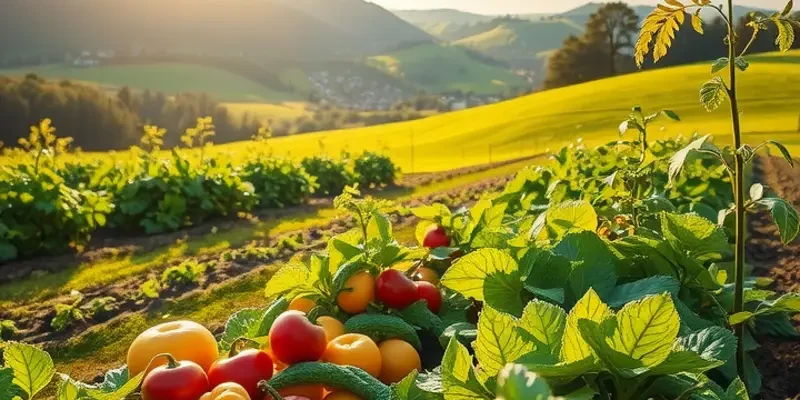Nomadic cultures across the globe enhance our understanding of food through their distinct culinary customs forged by mobility, environment, and tradition. These practices reflect not only survival but also rich cultural heritage, showcasing unique ingredients and preparation methods. This exploration into the culinary traditions of nomads invites food enthusiasts and culturally curious readers to engage with diverse global cuisines and discover the fulfilling stories behind these vibrant food cultures.
Feasts on the Move: Ingredients and Techniques

Nomadic peoples across the globe have developed sophisticated methods to adapt their diets to their environments. With a transient lifestyle, the ability to identify and leverage local produce and livestock gives these communities a deep culinary diversity.
Central to nomadic culinary customs is the art of foraging. Using an intimate knowledge of their immediate surroundings, nomads expertly gather wild plants, nuts, berries, and roots, infusing their meals with nutrients and variety. In the tundras of Siberia, for instance, edible roots and berries found in harsh climates are commonly used. Desert regions may yield a variety of grains and seeds that sustain the community during sparse times.
Livestock is a vital component of the nomadic diet, providing meat, milk, and other by-products essential for sustenance and trade. The pastoralists of Mongolia, for example, depend heavily on goats, yaks, and camels. These animals are resilient to the challenging weather, and their ability to convert sparse vegetation into food resources is remarkable.
Open-fire grilling is a time-tested technique employed by many nomadic cultures. Without permanent cooking facilities, open fires offer a versatile solution. Meat, fish, and even vegetables are cooked directly over the flames or on hot stones, imbuing them with a distinct smoky flavor. This method is prevalent among the nomads of Africa, who use open fires to impart taste and texture to their meals.
Food preservation is another critical skill for nomadic groups. Smoking and drying are popular techniques that maximize the shelf-life of food in the absence of refrigeration. Smoked fish and meats are staples among the herders of the Arctic, while drying fruits and meats is a practice shared among many nomadic cultures. Techniques like these not only preserve food but intensify flavors, much like the drying of citrus peels explored here.
Portable cookery systems are ingenious solutions that support the transient lifestyle of these communities. Compact clay ovens, carried along migratory paths, allow for the baking of bread and roasting of meats anywhere. For example, the Bedouin people utilize portable metal grills, letting them prepare meals in the vast stretches of the desert.
Mastering these techniques and adapting their diets have enabled nomadic peoples to thrive in diverse ecosystems. With each migration, they enrich and broaden their culinary repertoire, ensuring that their diets are as dynamic and evolving as their way of life.
Cultural Significance of Food in Nomadic Societies

For nomadic societies, food extends far beyond mere nutrition; it is woven deeply into their cultural identity and social structures. The art of communal feasting, deeply rooted in tradition, serves as a powerful medium of communication and sociability. Nomadic feasts are not simply about eating together; they are ceremonial, shaping and reinforcing social bonds.
Consider the Mongolian practice of preparing khorkhog, a dish made by roasting mutton with hot stones in a container. This traditional preparation is a communal event involving family and friends. The process of making khorkhog harmonizes teamwork and joyous interaction, emphasizing the importance of hospitality. Sharing such a meal is an embodiment of kinship, fostering strong ties within the community.
Similarly, the Maasai of East Africa celebrate with roasted goat, a dish called nyama choma. This practice is central to social gatherings, where food serves as a mirror reflecting respect, generosity, and unity. The act of sharing meat, in particular, highlights the egalitarian ethos of nomadic groups, where the distribution of food underscores equality and mutual respect.
The preparation and sharing of food in nomadic cultures often coincide with spiritual and religious rituals, further solidifying their cultural significance. Ceremonies such as weddings, births, and harvests are deeply intertwined with specific food customs. These rituals maintain continuity between generations, ensuring cultural narratives and traditions endure despite the transient nature of nomadic life.
Hospitality is another cornerstone, shaping the nomadic experience and delineating social relationships. Inviting travelers and strangers to share a meal is more than a gesture of kindness; it is a sacred duty. This openness creates a network of social bonds extending beyond immediate communities, reinforcing a shared identity and mutual reliance among nomads.
Food ingrains a profound sense of place in nomadic societies, connecting them to the landscapes they traverse. By understanding the natural resources available in varied terrains, nomadic groups adapt their culinary practices accordingly. Whether foraging wild herbs or utilizing specific cooking techniques that conserve resources, their culinary customs embody a sustainable approach to living harmoniously with the land.
In examining the cultural significance of food in these societies, one cannot ignore the environmental consciousness embedded within their traditions. Nomadic groups exemplify an ecological awareness in food procurement and preparation, aligning closely with modern strategies aimed at reducing dietary ecological harm. For readers interested in these sustainable practices, exploring how nomads achieve dietary balance by adapting to their environment can provide enlightening insights, as discussed in this article on reducing dietary ecological harm.
In sum, the culinary customs of nomadic peoples encapsulate much of their existence. From reinforcing social structures and spiritual beliefs to embodying sustainability, food is a central thread in the rich tapestry of nomadic life. The legacy of these traditions continues to inspire and remind us how deeply interconnected our food practices are with our cultural identity.
Final words
Culinary customs of nomads teach us the importance of adapting to the environment while celebrating cultural heritage through food. These traditions are rich tapestries woven with the threads of survival, community, and connection. Exploring the diverse cuisines of nomadic peoples allows us to appreciate the profound relationship between food and identity. As we open our kitchens to these ingredients and techniques, we invite a world of flavors and stories that reflect age-old traditions, igniting a curiosity to learn from these resilient cultures.








